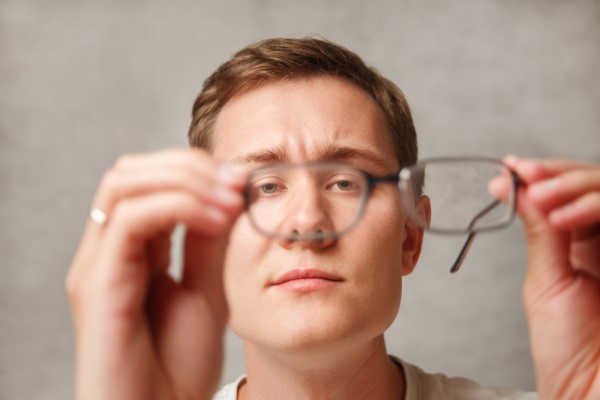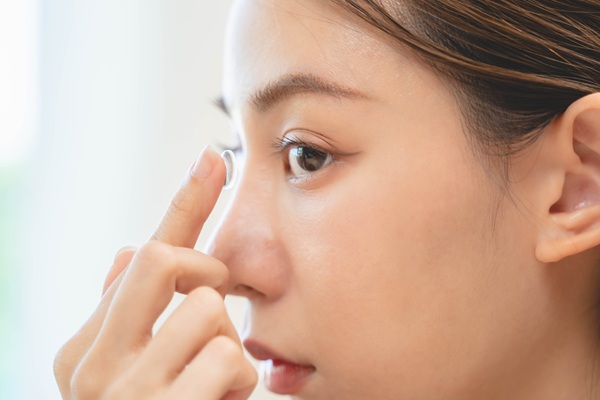What Are Progressive Lenses?

Has your optometrist recently recommended progressive lenses to you? Read on to learn more about this type of glasses. Progressive lenses come in various shapes, sizes, and functions.
Progressive lenses have different prescriptions as users move their eyes up and down the lens. This kind of lens is sometimes called a no-line bifocal. This kind of lens should not be confused with transition lenses that change color when exposed to sunlight. Progression lenses are free of lines and have no negative impact on your appearance.
How progressive lenses work
Single-vision lenses with a single prescription are the most common kind of prescription eyeglasses. Three different prescriptions are needed to make a pair of progressive lens glasses.
As humans become older, perceiving both close-up and far-off things diminishes. Progressive lenses are designed to address several multiple vision demands in a single lens, where a "distance seeing" field is often placed into the top section of the lens and a "close vision" field is typically constructed into its lower part. A progressive lens allows for the integration of multiple visual angles in one lens without any discernible difference between the fields, unlike standard bifocals or trifocals.
The reading power of the lenses increases gradually from distant to intermediate and finally to the maximum. The term "no-line" trifocals or bifocals refers to the lack of a visible line between the various strengths of the lens, and when required, the center of the lens serves as an intermediate vision correction. It is often recommended for presbyopia, a condition that makes it challenging to concentrate on close objects.
People with presbyopia are more likely to need progressive lenses. Adults over the age of 40 are more likely to suffer from this issue, which inhibits their ability to concentrate on close objects. The optometrist can suggest the appropriate progressive lenses for an individual's needs.
The types of progressive lenses
When it comes to progressive lenses, the fit is the most crucial consideration. It is important to choose a pair of eyeglasses that fit one's face and lifestyle. Progressive lenses come in different forms, including:
Computer progressive glasses
Clear eyesight in the workplace is the primary goal of computer progressive lenses, also known as near-variable focus lenses. These glasses are beneficial for those who sit in front of a computer for more than four hours daily day as it helps minimize digital eye strain.
This type of lens is only meant to be used indoors and should be worn alone. The drawback is that individuals will need two different pairs of glasses. Think of computer progressive lenses as specialized eyewear; they serve a function and alleviate discomfort, but they will not replace regular eyeglasses completely.
Premium progressive lenses
Premium progressive lenses provide a wider and smoother view. There is a high level of customization with these lenses, incorporating the patient's prescription, frame choice, and eye anatomy.
It is common practice to include the dominant eye in the design of premium progressive lenses. The lenses also help the transition between various prescriptions seem more comfortable. These qualities contribute to the high cost of premium progressive lenses.
Ground-view progressive lenses
Progressives with a ground-level view are ideal for those who want to spend time outside. These glasses are designed to provide a more natural view and lessen lens distortion. They provide greater vision from the sides and the bottom, thus allowing individuals to enjoy better vision when driving, using a computer, or looking down.
Standard progression lenses
These lenses have a larger reading area but are not as specialized as other lens types. Standard progressives often have a more extended distinction between prescriptions, necessitating bigger frames.
Tips for progressive lenses
The transition to new glasses is never easy, no matter the kind of progressive lens. The optometrist will walk patients through this procedure to ensure that the eyeglasses are centered correctly over their eyes and that they are comfortable to wear. If the lenses are incorrectly fitted, there might be some difficulty adjusting.
Adjusting to new lenses may take at least two weeks. It may take up to a month for some individuals to become used to it. Patients can contact the optometrist's office if their eyes fail to adapt after this time. Whenever feasible, use the new glasses instead of the old ones to adapt more quickly.
Ready to schedule your appointment?
Your optometrist is available to assist you, whether you are experiencing problems with your vision or need to change your prescription. Visit your optometrist if you are interested in learning more about progressive lenses.
Get more information here: https://www.texasoptical.net or call Texas Optical at (214) 771-7333
Check out what others are saying about our services on Yelp: Read our Yelp reviews.
Recent Posts
For those living with diabetes, undergoing a diabetic eye exam is one of the most important steps in protecting their vision and overall eye health. High blood sugar levels can lead to a range of complications, including conditions that damage the eyes over time. These exams help detect these issues before they become serious, allowing…
Contact lenses provide clear vision and convenience for individuals who prefer an alternative to eyeglasses. However, proper care and maintenance are essential to prevent infections, irritation, and eye damage. Neglecting hygiene practices can lead to serious eye conditions, including corneal ulcers and keratitis. Understanding how to clean, store, and handle contact lenses ensures long-term eye…
Maintaining eye health and preventing long-term issues is the result of consistent and quality vision care. Many people focus on overall wellness but may overlook daily habits that support healthy eyesight. However, taking simple steps each day can protect vision, reduce eye strain, and prevent future complications. By making eye health a priority, it is…
Prescription contacts provide vision correction, comfort, and convenience for those who do not want to wear glasses. However, caring for and wearing contacts takes some getting used to. Learning to insert, remove, and maintain them will help ensure a comfortable and safe experience.Not all contact lenses are the same, and choosing the right pair is…


